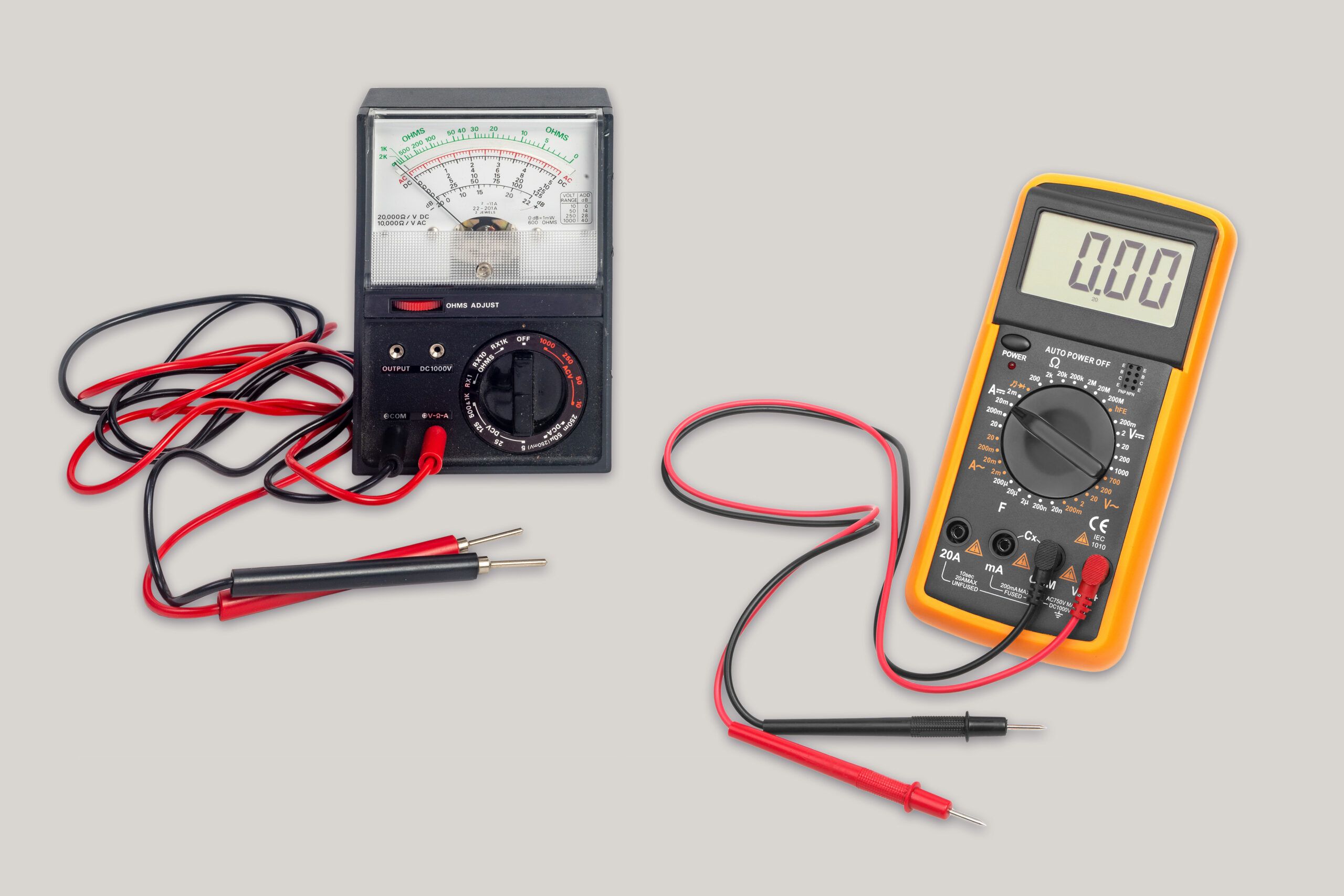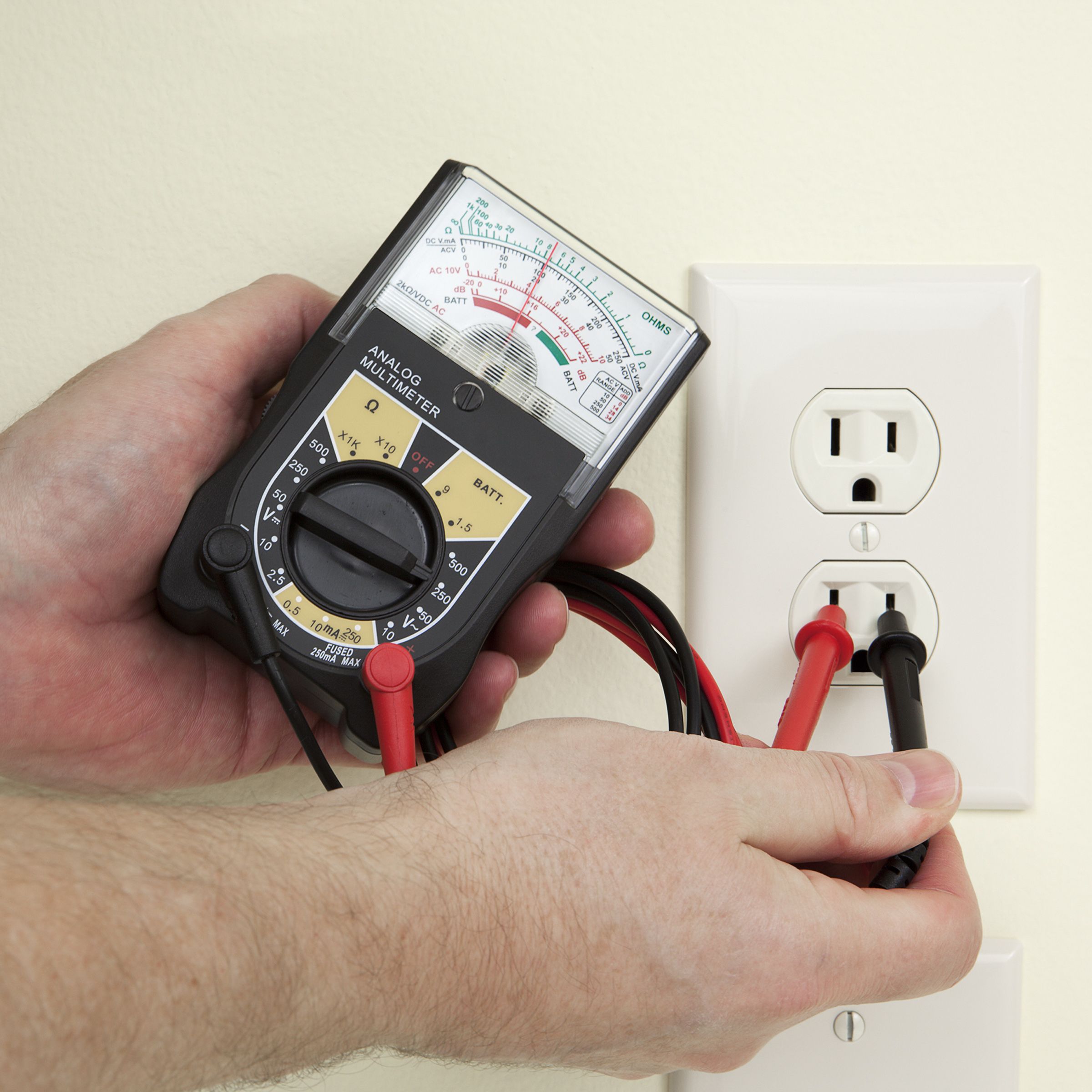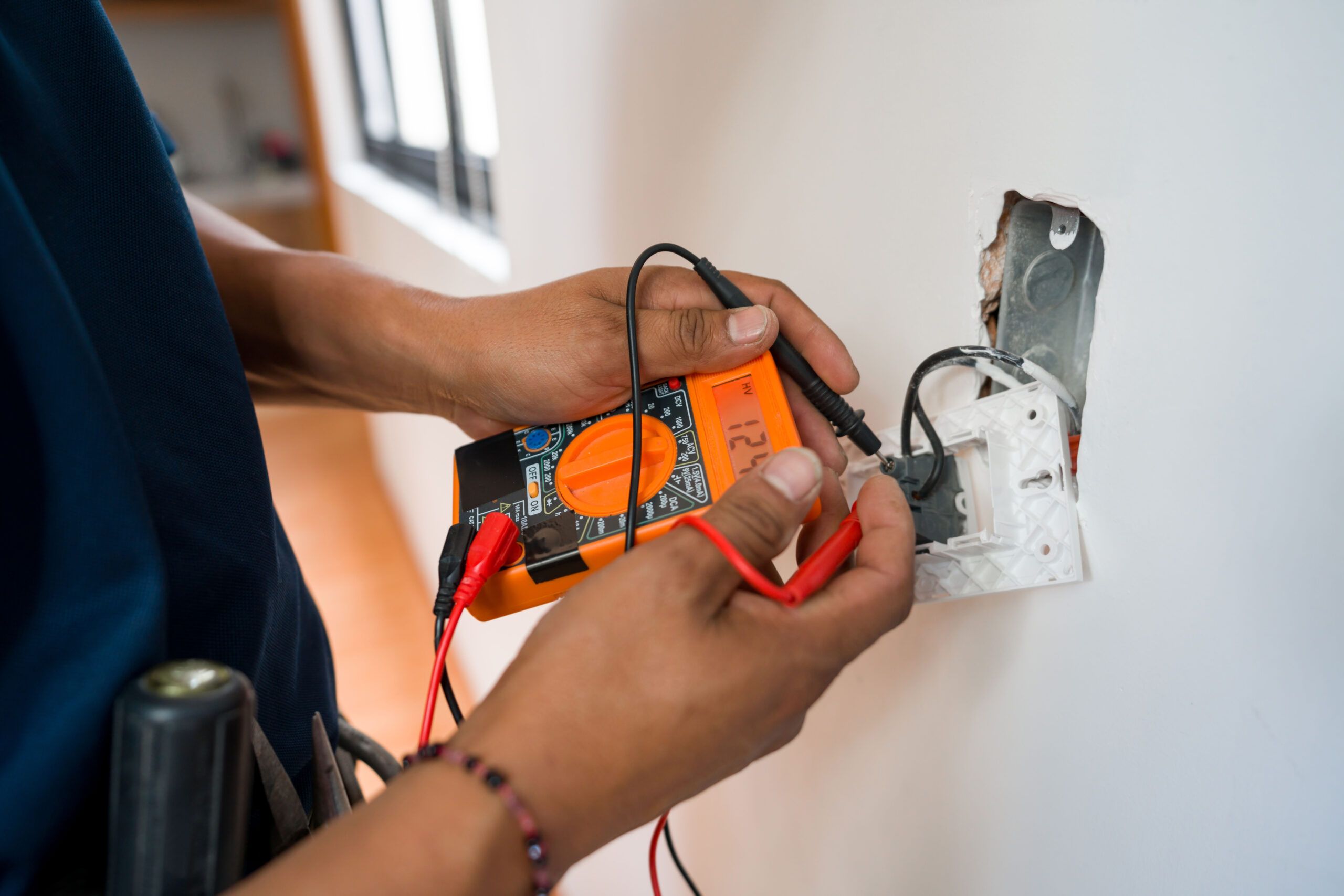Do-it-yourself enthusiasts and professionals, alike, should know the ins and outs of multimeters, which are tools that measure voltage and current as part of electrical projects. Multimeters help users identify wiring issues and prevent accidents. Read more about these tools in our guide below, which sorts through types of multimeters, varying features, and tips for how to choose the right model.
What Is a Multimeter?
A multimeter is an electrical testing device that measures voltage (volts or V), current (amperage or A), and resistance (ohms or Ω). Many multimeters also test for continuity, which verifies a constant pathway through which electricity can flow.
You can use multimeters to test circuit voltage, identify short circuits, measure current draw, and check component functionality. Professional electricians, electrical technicians, DIY enthusiasts, and electronic repair specialists all use multimeters to test home wiring, automotive systems, or electronic devices.
Types of Multimeters

There are many types of multimeters, and each has a different function. Read about the different types below so you can choose the right tool for your needs.
Analog Multimeters
Analog multimeters feature a physical needle that moves across a printed gauge to display a reading. They can be challenging to read accurately, but they are especially useful for sensitive electronics work.
Digital Multimeters
Digital multimeters are the most popular option for both professionals and DIYers. They feature LCD screens that display numerical readings that are easy to read. Digital multimeters work more quickly and more precisely than analog options, but they can damage sensitive electronics by issuing a small amount of current output during testing.
Clamp Meters
Clamp meters are specialized multimeters that measure current without breaking circuits. They have a clamp that opens to fit around a wire so the meter can detect the magnetic field that the current field creates. Clamp meters are best for measuring high currents or testing live circuits, when breaking a connection is impractical or dangerous. Professionals typically use them on industrial or high-power systems.
Key Features To Look For in a Multimeter
Keep the key features below in mind when you’re choosing a multimeter:
Auto-Ranging vs. Manual Ranging
Auto-ranging multimeters select the appropriate measurement range, which makes them easy to use, especially for beginners. They eliminate the need to estimate the expected measurement or adjust the range manually. Manual ranging multimeters require the user to select the appropriate range, which can be more time-consuming, but provides readings more quickly and offers users more control.
Safety Ratings
Look for safety ratings when you’re selecting a multimeter, especially if you need one for a professional project, or are working with high-voltage systems. Look for multimeters that feature CAT (Category) ratings that match your intended use. CAT III and CAT IV are best for most homes and industrial uses, and protect against voltage spikes and transients.
Additional Measurement Capabilities
Modern multimeters have features such as capacitance testing, frequency measurement, temperature sensing, and diode testing.
How To Choose the Right Multimeter for Your Needs
The right multimeter for you depends on your level of expertise and what type of projects you’re planning. Read below to see which user profile best fits you.
For DIY Enthusiasts
DIYers typically need a reliable, easy-to-use multimeter for basic home electrical work and simple automotive diagnostics. Look for a digital multimeter that features auto-ranging, basic voltage, current, resistance measurements, and a continuity tester. A CAT III safety rating is sufficient for most DIY applications.
For Professional Electricians
Professional electricians need more robust multimeters. Look for models that feature high safety ratings (CAT III or IV), true RMS measurement for accurate AC readings, and a wide range of measurement-taking capabilities. These models feature data logging, min/max recording, and high current measurement.
For Electronics Hobbyists
Electronics hobbyists need precise, sensitive multimeters that work with low-voltage circuits and components. Look for models that include high resolution, low voltage DC ranges, and features such as capacitance and transistor testing.
Essential Multimeter Functions
You must understand the core functions of a multimeter to use it correctly and effectively. You’ll usually need to measure voltage, test resistance, check continuity, and measure current.
Measuring Voltage

Measuring voltage is one of the most typical functions of a multimeter. This helps users to confirm power sources, check battery levels, and troubleshoot circuits. Follow the steps below to measure voltage:
- Set the multimeter to the voltage function (V).
- Choose AC or DC based on the power source.
- Connect the black probe to COM and the red probe to VΩ.
- Touch the probes to the correct points in the circuit.
- Read the display for the voltage measurement.
Testing Resistance
You can test resistance to identify potential short circuits. Follow the steps below.
- Make sure power isn’t going to the circuit.
- Set the multimeter to the resistance function (Ω).
- Connect the probes as you would for voltage measurements.
- Touch the probes to the component or circuit points.
- Read the display for the resistance value.
Checking Continuity
You can check continuity to confirm whether a circuit is complete or if there’s a break in the connection. Multimeters typically make a beeping sound when they detect continuity. Follow the steps below.
- Set the multimeter to the continuity function. A sound wave symbol will typically denote this.
- Touch the probes to the ends of the wire or circuit.
- Listen for a beep or watch for a zero resistance reading to confirm continuity.
Measuring Current
Measure current if you want to diagnose electrical problems or check device power consumption. Follow the steps below.
- Set the multimeter to the current function (A).
- Choose AC or DC.
- Connect the red probe to the proper current input.
- Break the circuit and connect the meter in series.
- Read the display for the current measurement.
Step-by-Step Guide: How To Use a Multimeter
Read below for tips on how to properly use a multimeter:
Preparing Your Multimeter
- Inspect the multimeter and probes for any damage.
- Insert the black probe into the COM port and the red probe into the VΩ port.
- Turn on the multimeter and select the appropriate function.
- Set the range for something higher than your expected measurement if you’re using a manual ranging multimeter.
Testing an Electrical Outlet
- Set the multimeter to AC voltage (VAC).
- Insert the black probe into the larger (neutral) slot of the outlet.
- Insert the red probe into the smaller (hot) slot.
- Read the voltage, which should be around 120V for standard outlets.
- Move the red probe to the ground slot to confirm proper grounding.
Troubleshooting Automotive Electrical Issues
- Set the multimeter to DC voltage (VDC).
- Connect the black probe to the vehicle’s chassis or battery-negative terminal.
- Touch the red probe to the positive battery terminal to check the battery voltage. It should be around 12.6V when it’s fully charged.
- Set the meter to measure current, and connect it in series with the negative battery cable to check for parasitic drain.
Safety Precautions When Using Multimeters
You must prioritize safety when you’re working with electrical systems. Make sure your multimeter is rated for the voltage you’re testing. Never exceed the multimeter’s maximum input limits, and always disconnect the probes from the circuit before changing functions.
Keep your fingers behind the probe guards when you’re taking measurements, and never use a multimeter that has cracked casing or damaged probes. Turn off the power and discharge capacitors before you measure resistance or continuity.
Maintaining and Calibrating Your Multimeter
Properly maintaining your multimeter will make it safe to use, and will keep readings accurate. Clean the multimeter regularly with a soft, dry cloth, and replace batteries when low battery indicators appear. Store the multimeter in a dry, cool palace when you’re not using it. Hire a professional to calibrate your multimeter annually, especially if you’re taking critical measurements.
Common Multimeter Applications
You can use multimeters for electrical work, automotive diagnostics, or other projects. Read about common applications below.
Home Electrical Work
You can use multimeters in your home to test outlet voltage and polarity. You can also make sure circuit breakers are functioning correctly, and troubleshoot appliance issues.
Automotive Diagnostics
If you have vehicle problems, you can use a multimeter to check for battery health and alternator output, test fuses and relays, and diagnose sensor malfunctions.
Electronics Repair
Use multimeters to test component values (resistors, capacitors, diodes), identify short circuits on circuit boards, and verify power supply outputs.

